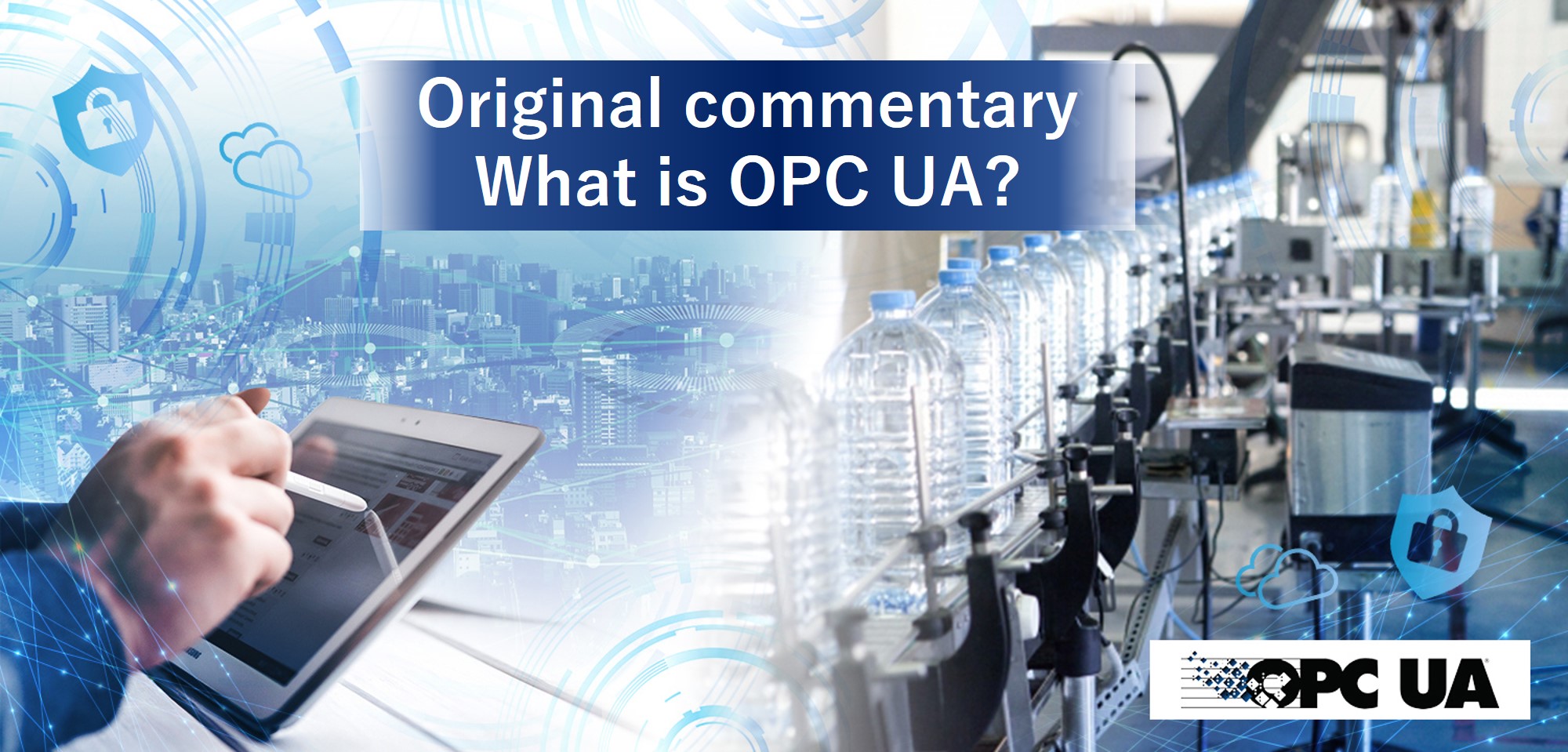

2. Features of OPC UA
“Connected, Communicated, Secured”
Connected
Industrial open networks and industrial Ethernet were introduced around 1990, dramatically improving interconnectivity. OPC DA (OPC Data Access) released in 1996 also contributed greatly to improved interconnectivity. In this way, OPC has achieved a state of "Connected" independent of vendors and hardware.
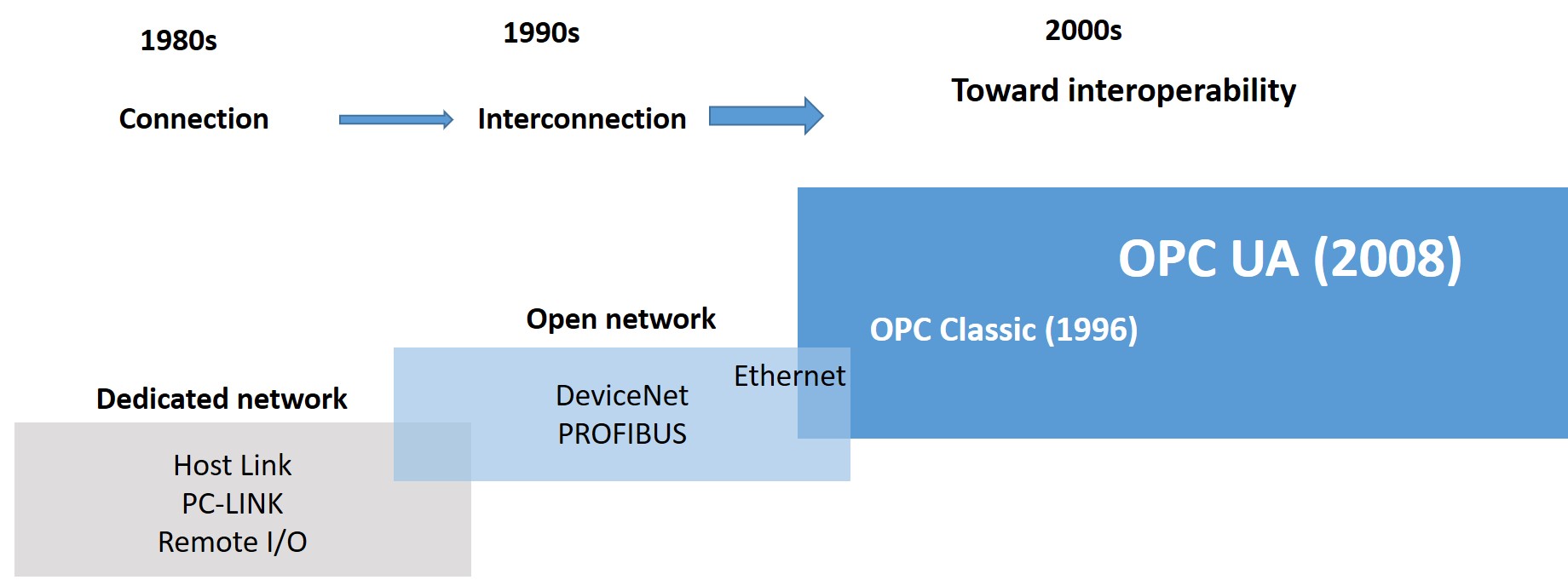
OPC then aimed for “Communicated” to further increase interoperability. OPC UA (OPC Unified Architecture) was released in 2006 and has been rapidly adopted in the last few years. It is the industrial interoperability standard that can offer the value of “Communicated”.
In addition to vendor and hardware independent data exchange, machines and applications communicate semantic information with each other, making construction and operation of machines and production systems more efficient. Not only engineers who implement improvements but also the management who want to improve productivity and management efficiency can leverage valuable information collected from machines and the production floor - this is the ideal state.
Communicated
Next we look at “Communicated”.
Even if “Connected” things can exchange data, the data cannot be utilized without understanding the meanings,
Previously, the parties exchanging data had to tacitly understand the meanings.

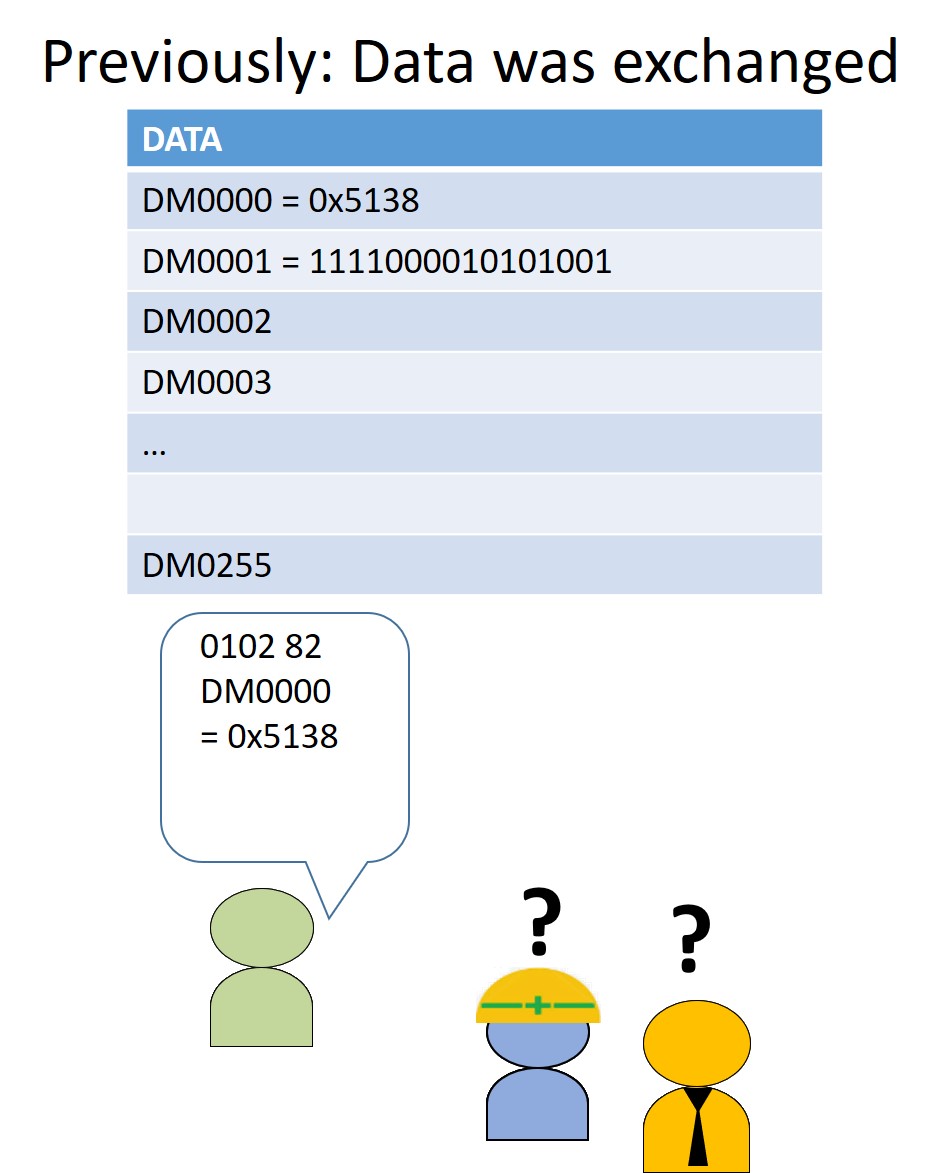
In order to realize semantic interoperability, OPC UA provides uniform modeling capabilities called “information models” that represent information and functions. An Information model is a module like a template where information to exchange is classified and given meaning.
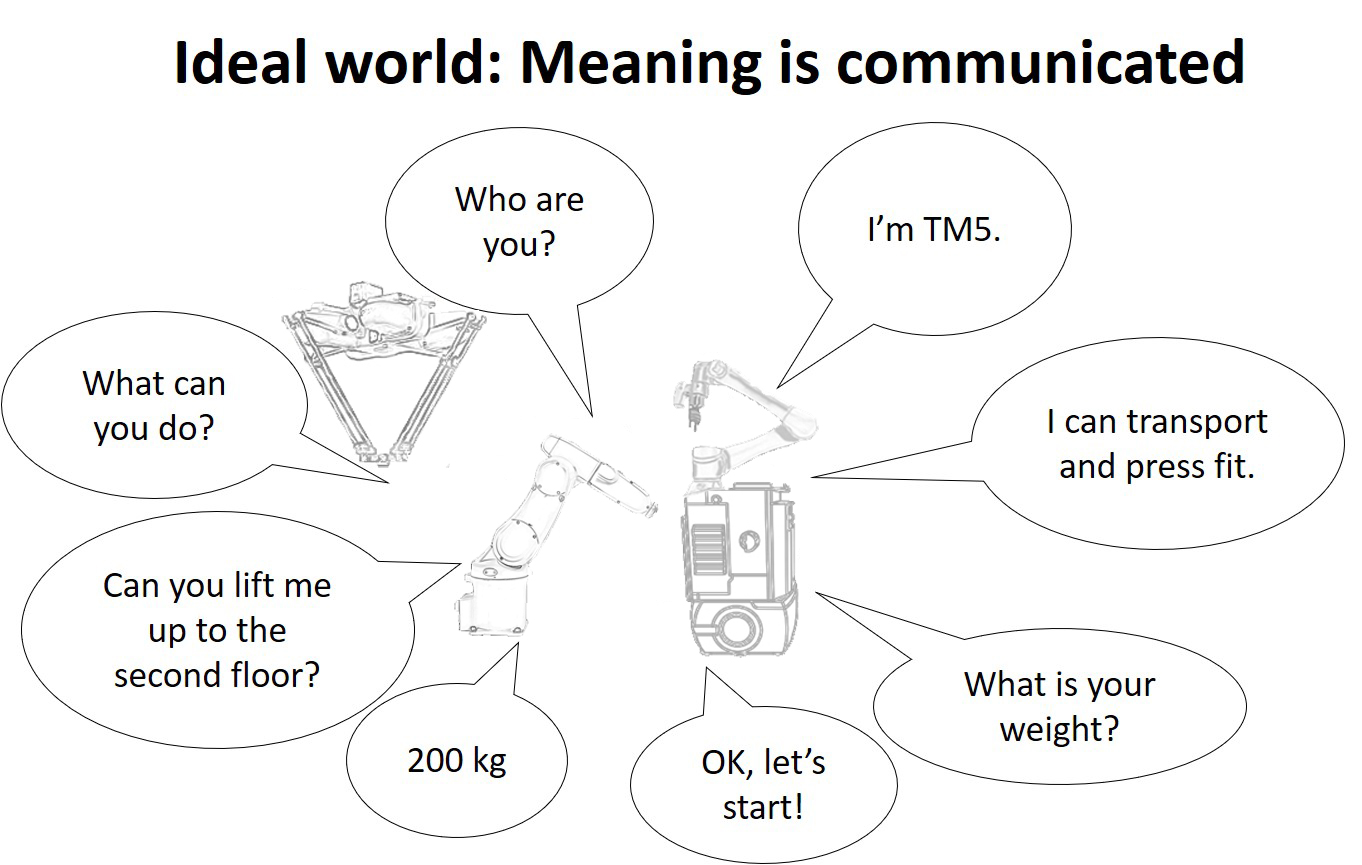
For example, information models can represent structure variables for controllers complying with IEC 61131-3 (PLCopen), an international standard for PLC.
The name of a structure variable becomes the name of a module used as a template, and the member name and data type of the structure variable represent data handled in the module. The figure below shows data of a photoelectric sensor.

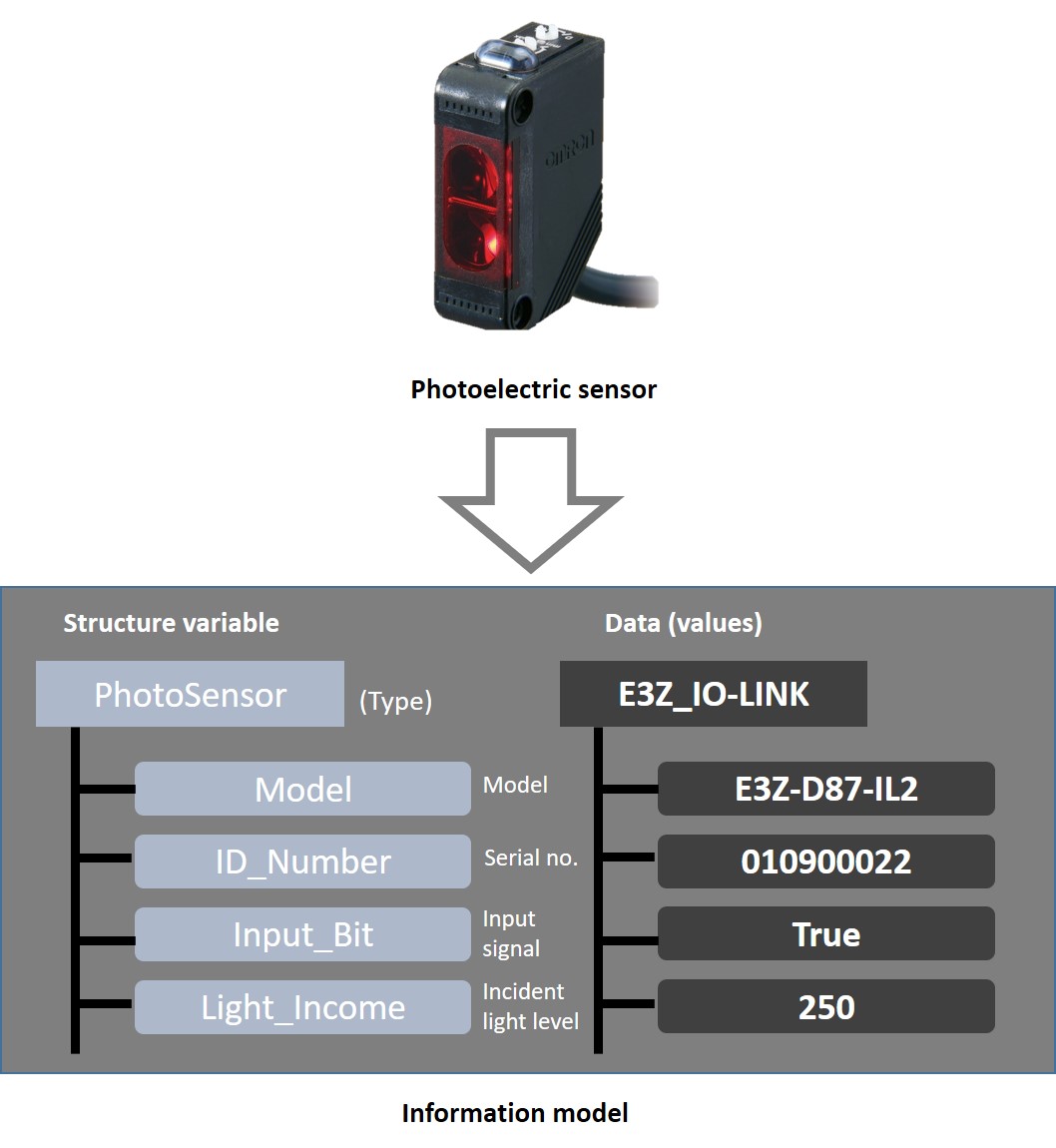
Structure variable names and member names are specified to exchange actual data. This facilitates communicating the structure and meaning of information and leveraging information, and also helps standardize information and interfaces.
The OPC Foundation not only offers this information model system but is active in creating new information models for practical applications. They develop specifications of information models through collaboration with other organizations that facilitate the adoption of industrial devices, machines, and applications. This information model is called a “companion specification”. In one example, the OPC Foundation cooperated with PLCopen, an international standards organization for PLC, to create a companion specification “OPC UA Information Model for IEC 61131-3” and release it in 2010. OPC UA integrated into Omron’s NX701-1□□□/NX102-□□□□/NJ501-1□00 complies with this companion specification.
Details of companion specifications and collaborations with other organizations will be described in 3. Activities of OPC UA (1) Collaboration.
Secured
To realize industrial IoT and Connected Factory, cyber security at manufacturing sites is a crucial issue for connection between industrial automation systems and the host IT system, remote access maintenance, and advanced use of the Internet to pursue productivity improvements.
Pharmaceutical and automotive parts manufacturers are increasingly attaching great importance to safe and secure manufacturing. They started to use the system to ensure that production data has not been manipulated, proving that products have been produced correctly.
OPC UA security is based on recognized standards that are also used for secure communication in the Internet and satisfies the three security requirements: confidentiality, integrity, and availability. Integrity by digitally signing the messages and confidentiality by encrypting the messages ensure secure connection between automation systems and IT systems.
German Federal Office for Information Security (BSI) analyzed the security of OPC UA specifications and software used as the foundation, and confirmed that OPC UA was designed with high-level security. OPC UA is the Secure By Design international standard in terms of specification and design.
OPC UA provides the secure connection and data transmission, which is one of the reasons why it is recommended for the communication technology for industrie 4.0.

(To be continued)
- 1. Outline of OPC UA "The Industrial Interoperability Standard"
- 2. Features of OPC UA “Connected, Communicated, Secured” (this article)
- 3. Activities of OPC UA (1) Collaboration
- 4. Activities of OPC UA (2) Compliance
- 5. OPC UA Products and Case Studies
- 6. Update on OPC UA
- 7. The proliferation and evolution of OPC UA
- 8. Case Study (Winder with OPC UA)
- 9. A New Initiative for OPC UA
[Reference]
The OPC Foundation website https://opcfoundation.org/
The OPC Foundation website https://opcfoundation.org/
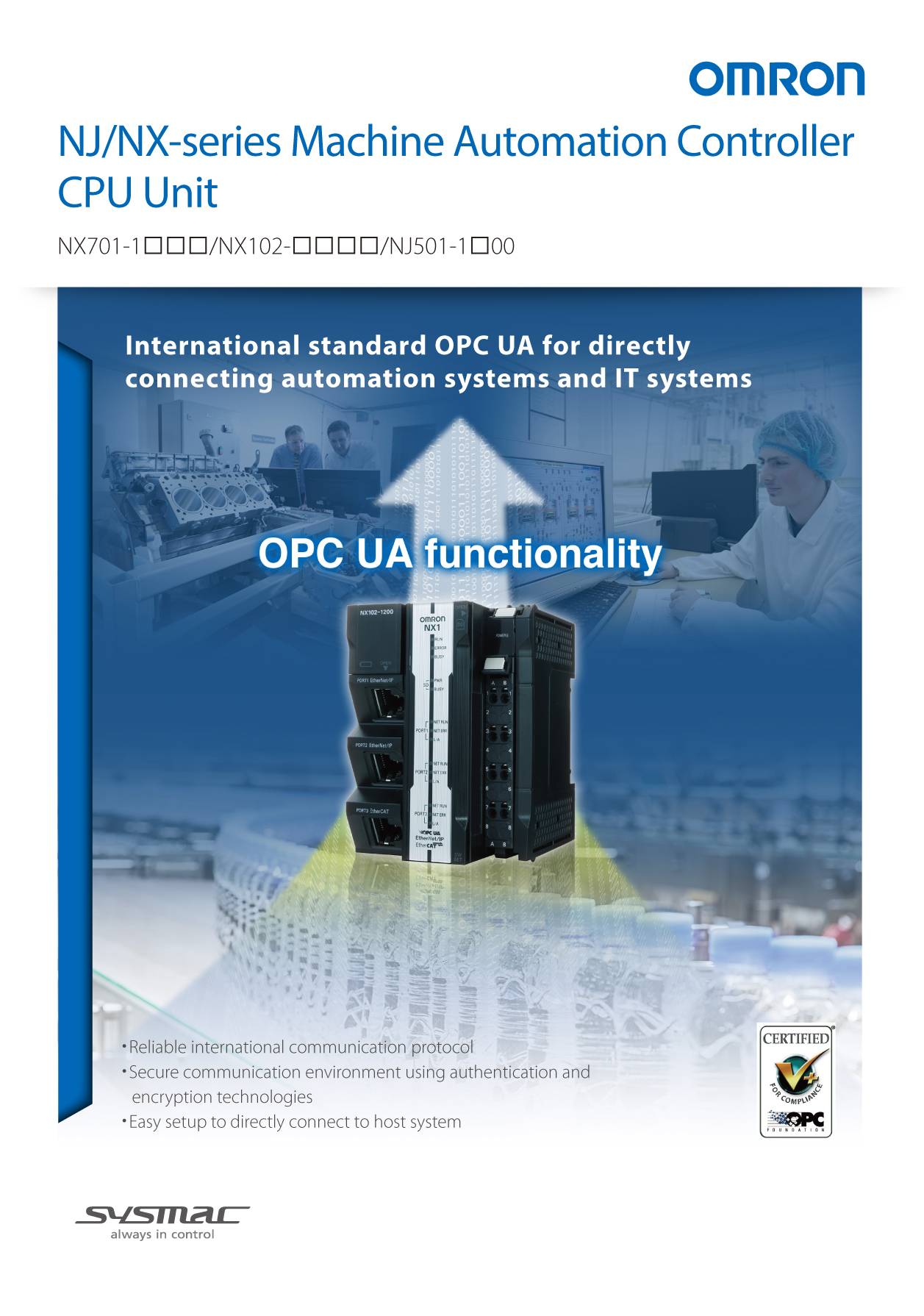
Download our product catalog
for more information!
for more information!
Machine Automation Controller
NJ/NX-series CPU Unit
NX701-1□□□/NX102-□□□□/NJ501-1□00
Photographs are for illustration purposes only and do not represent actual applications.
The system configurations in this page are for reference purposes only.
Sysmac is a trademark or registered trademark of OMRON Corporation in Japan and other countries for OMRON factory automation products.
EtherCAT® is a registered trademark and patented technology, licensed by Beckhoff Automation GmbH, Germany.
Safety over EtherCAT®is a registered trademark and patented technology, licensed by Beckhoff Automation GmbH, Germany.
EtherNet/IP™, CIP Safety™, CompoNet™, and DeviceNet™ are trademarks of ODVA.
OPC and OPC UA are trademarks of the OPC Foundation.
Other company names and product names in this page are the trademarks or registered trademarks of their respective companies.
Microsoft product screen shot(s) reprinted with permission from Microsoft Corporation.
The product photographs and figures that are used in this page may vary somewhat from the actual products.
The system configurations in this page are for reference purposes only.
Sysmac is a trademark or registered trademark of OMRON Corporation in Japan and other countries for OMRON factory automation products.
EtherCAT® is a registered trademark and patented technology, licensed by Beckhoff Automation GmbH, Germany.
Safety over EtherCAT®is a registered trademark and patented technology, licensed by Beckhoff Automation GmbH, Germany.
EtherNet/IP™, CIP Safety™, CompoNet™, and DeviceNet™ are trademarks of ODVA.
OPC and OPC UA are trademarks of the OPC Foundation.
Other company names and product names in this page are the trademarks or registered trademarks of their respective companies.
Microsoft product screen shot(s) reprinted with permission from Microsoft Corporation.
The product photographs and figures that are used in this page may vary somewhat from the actual products.